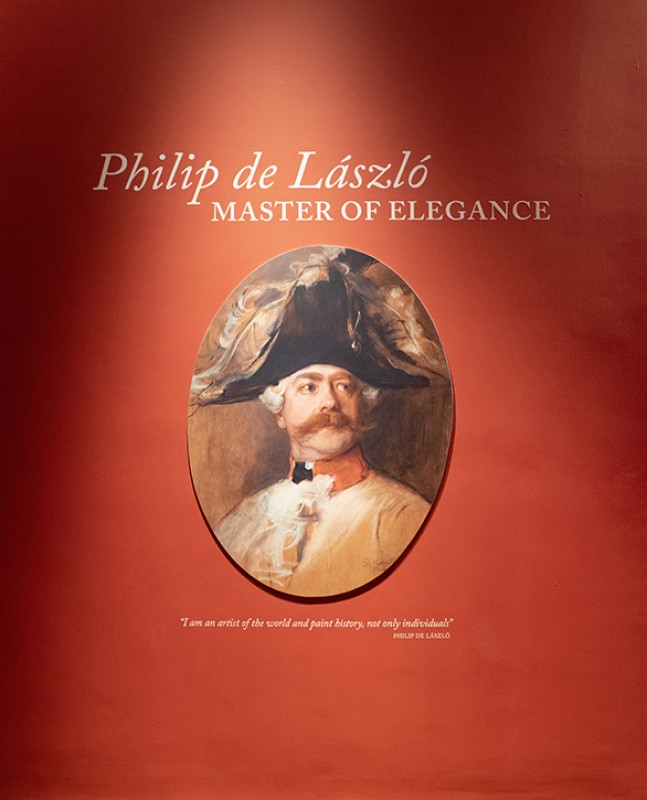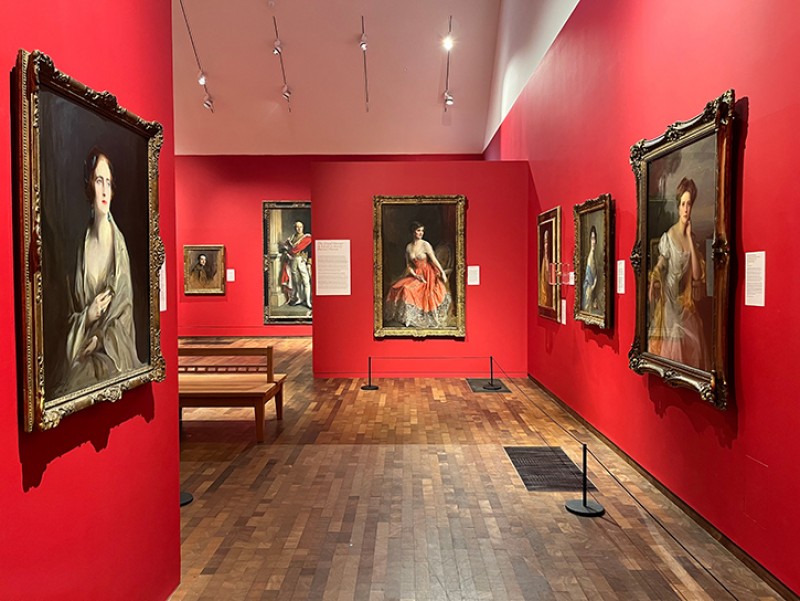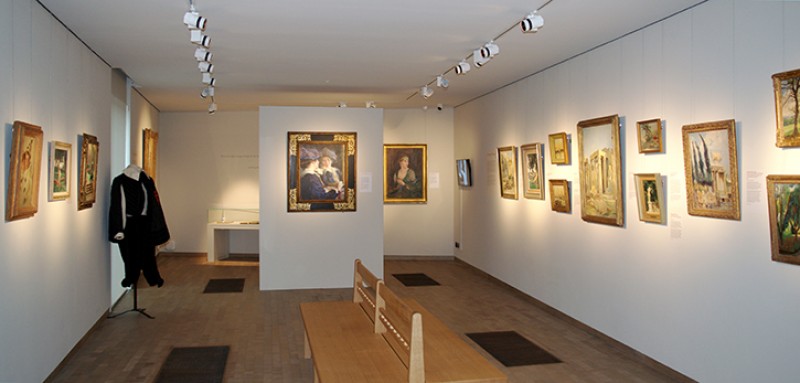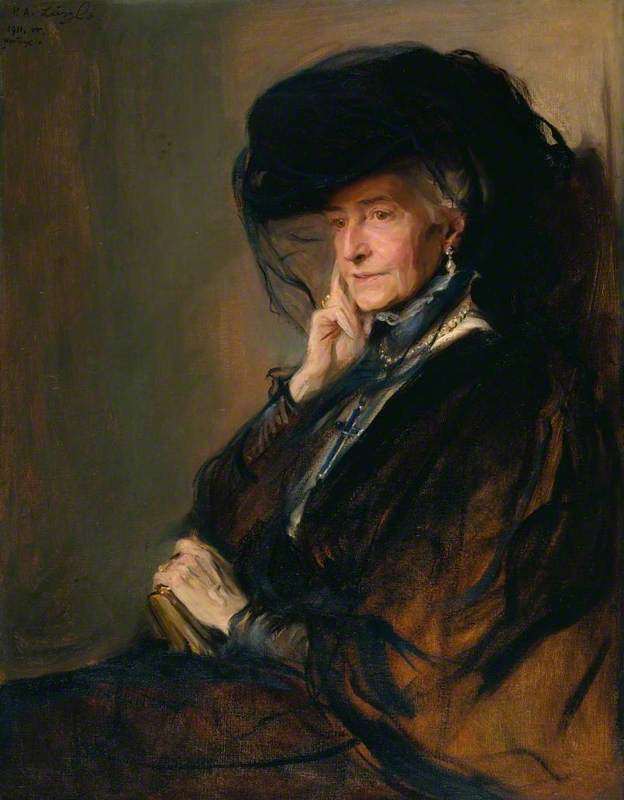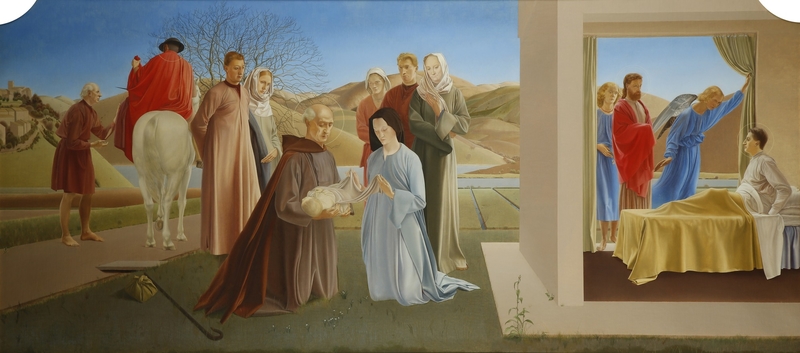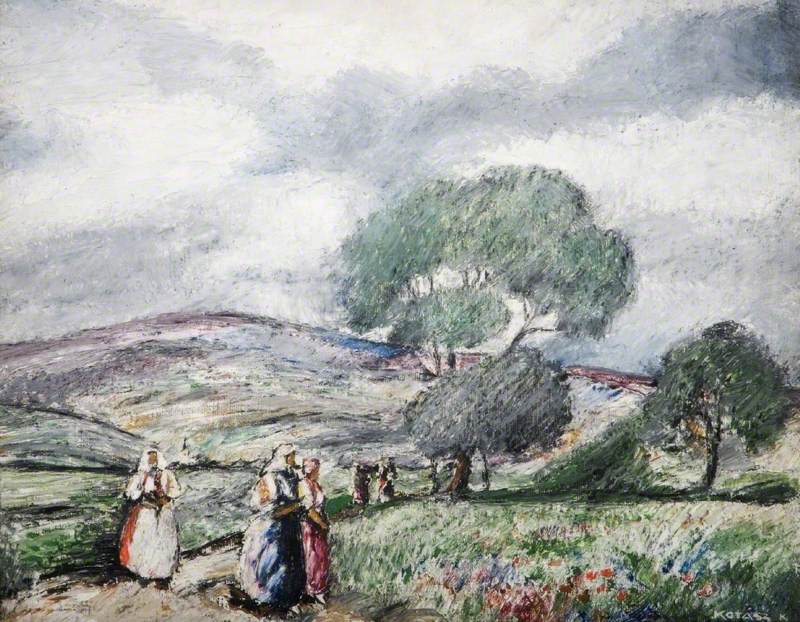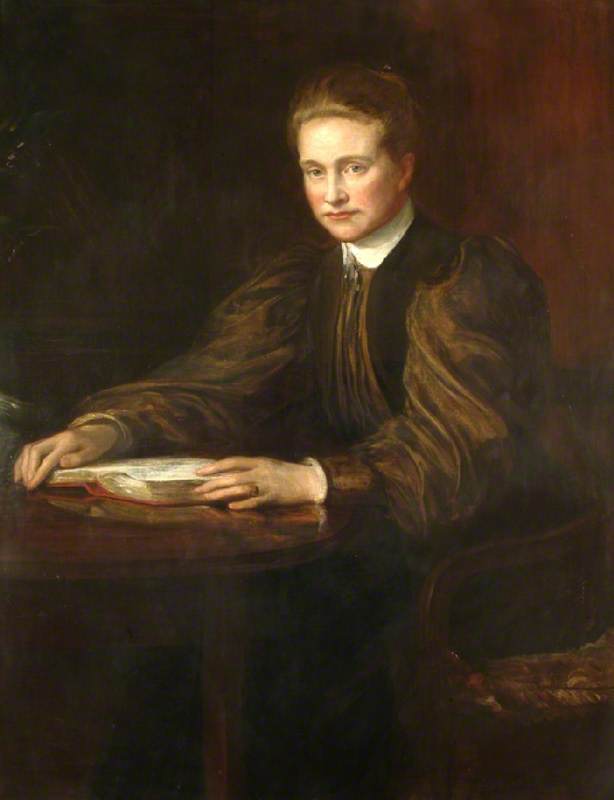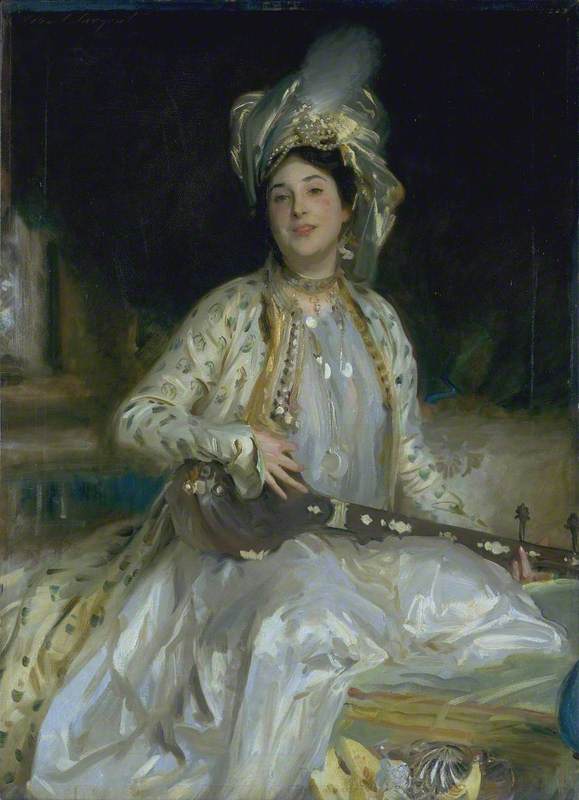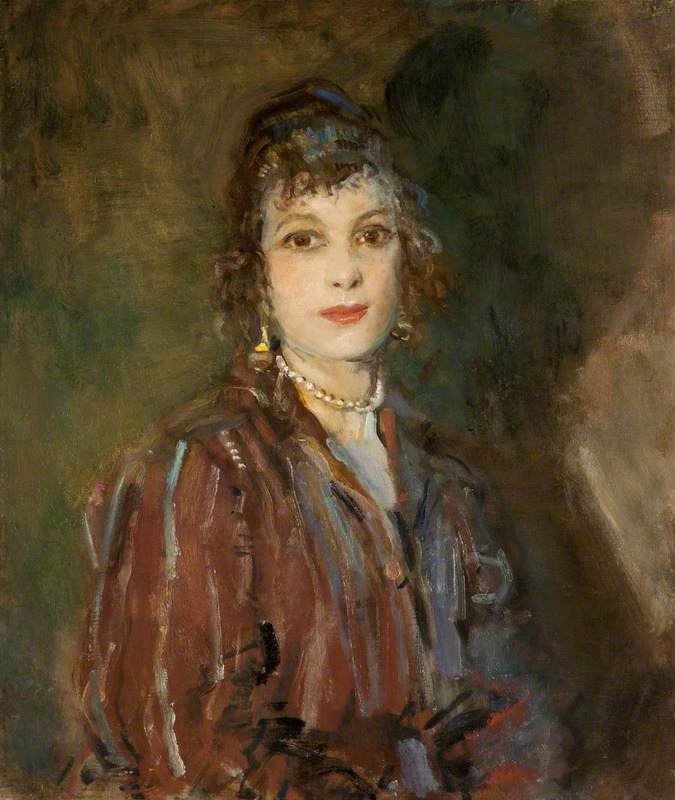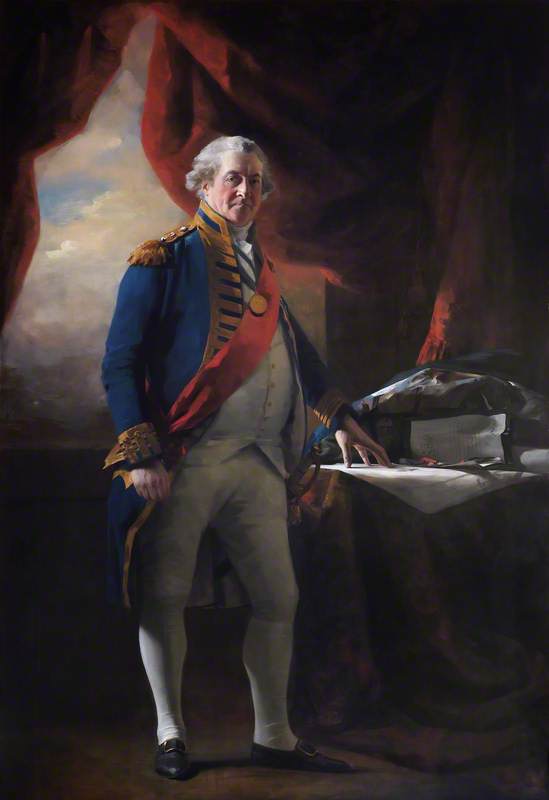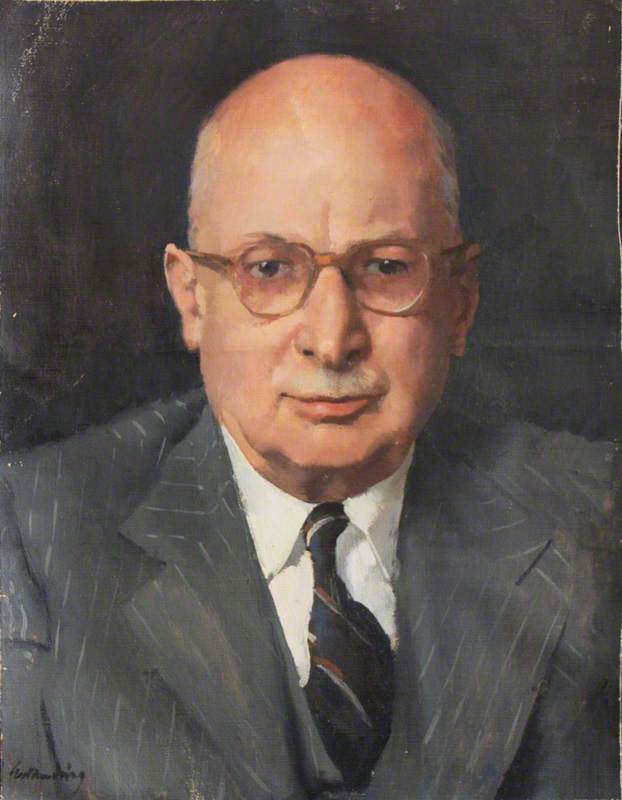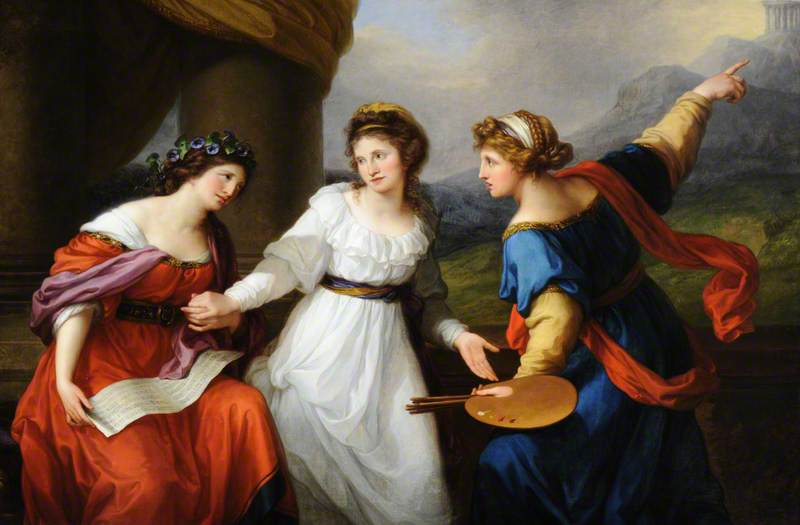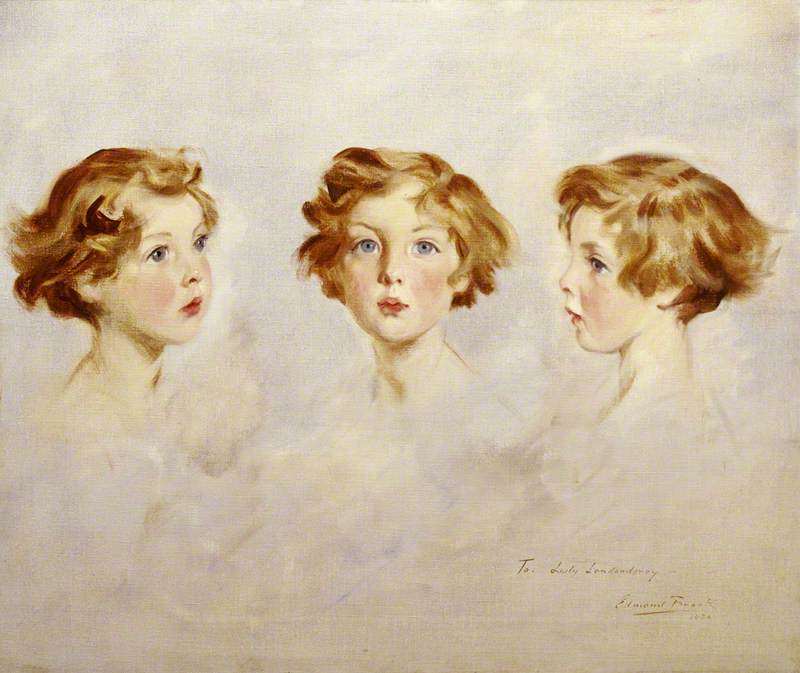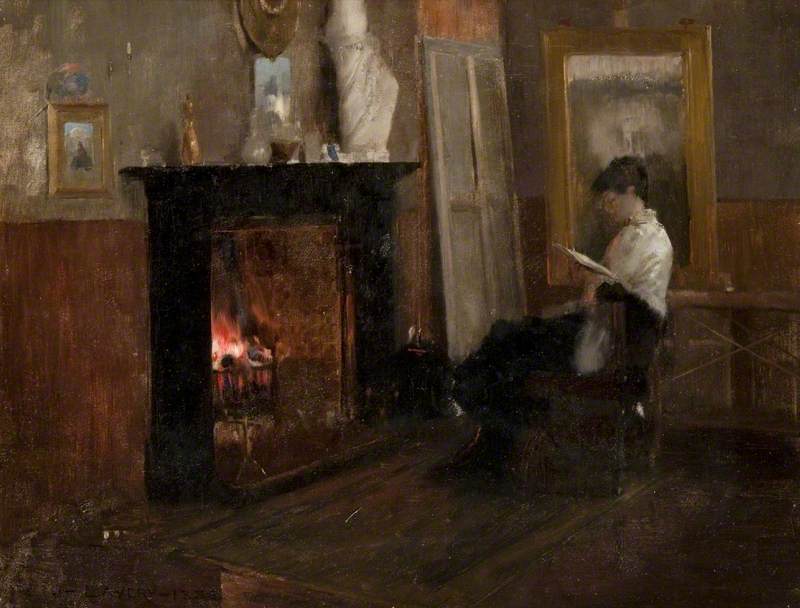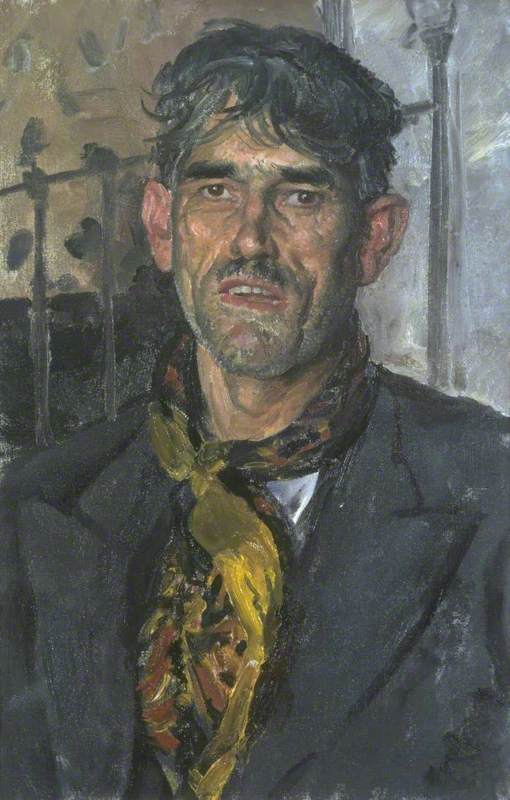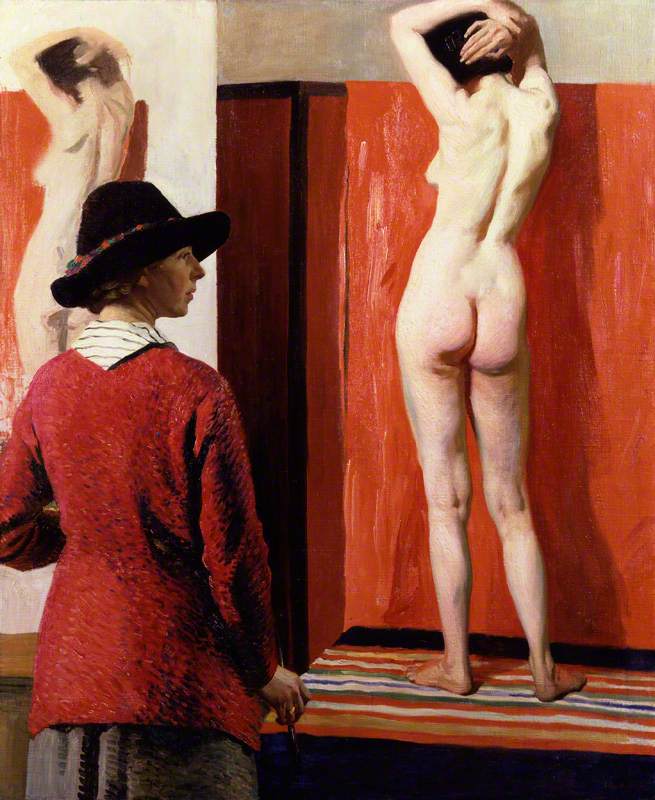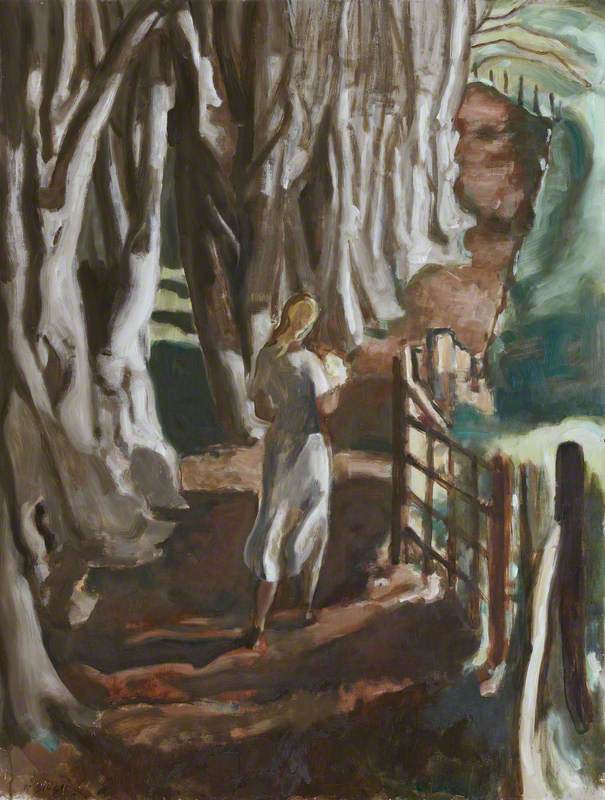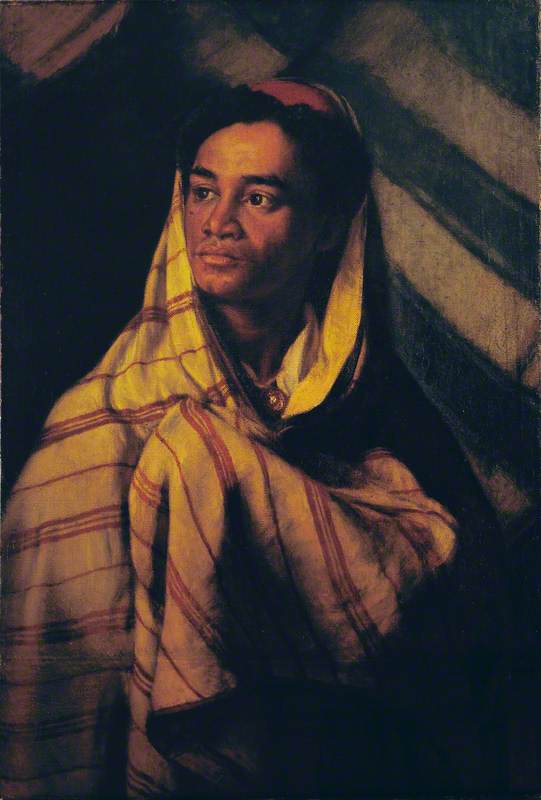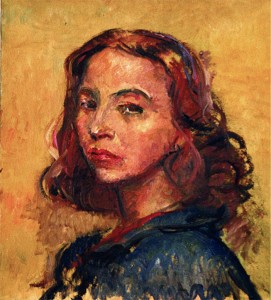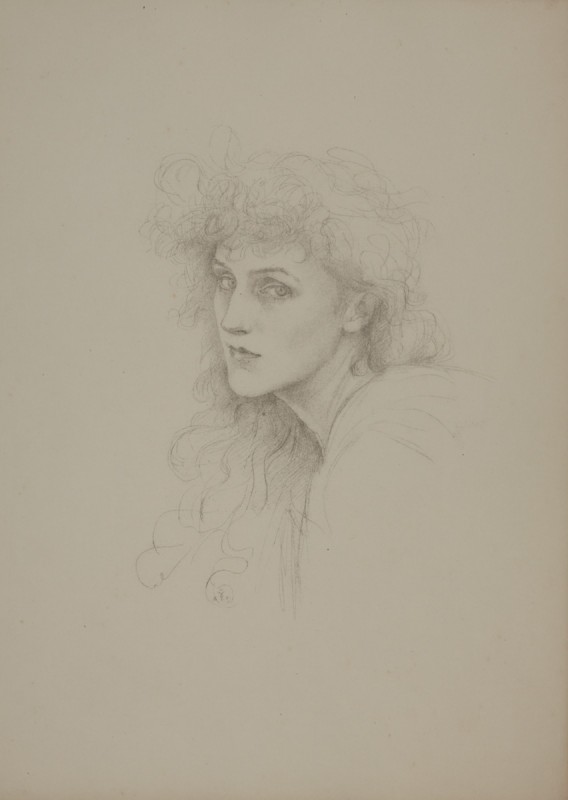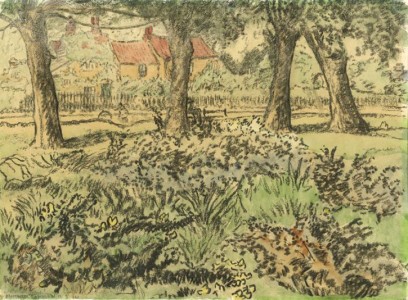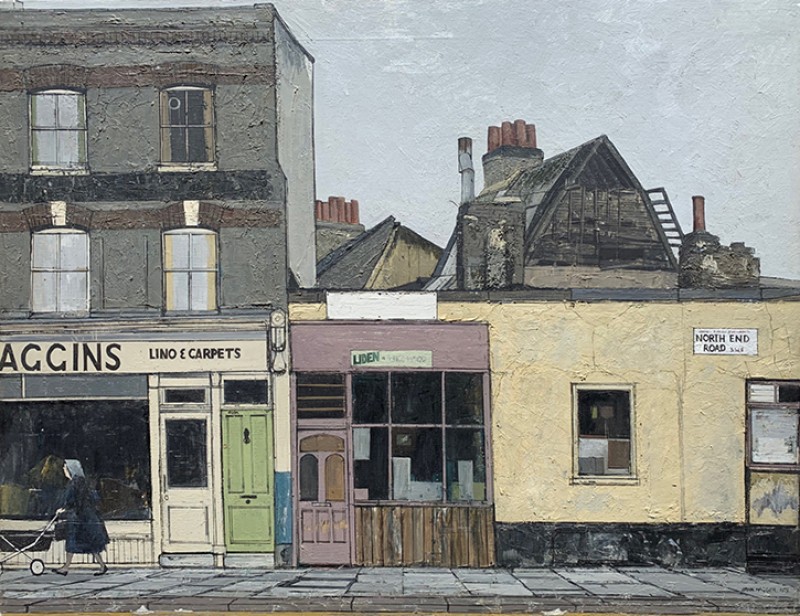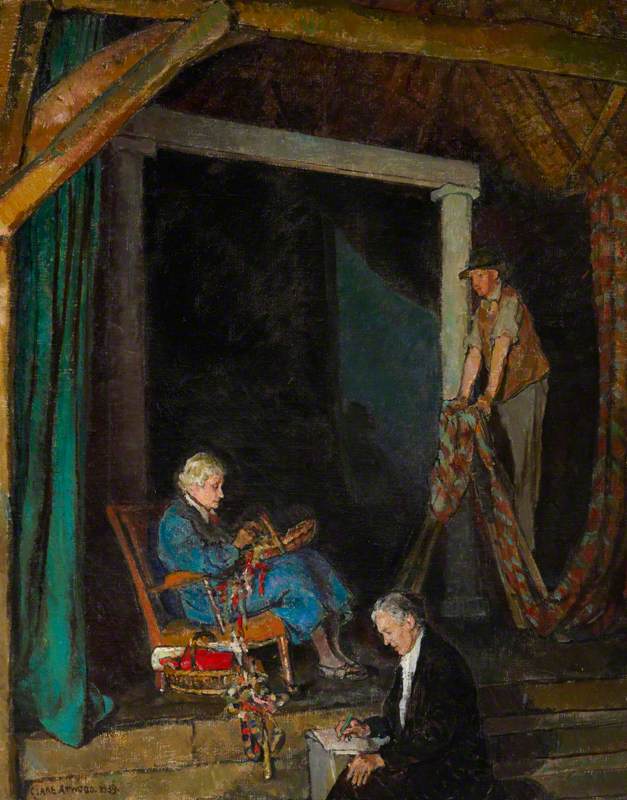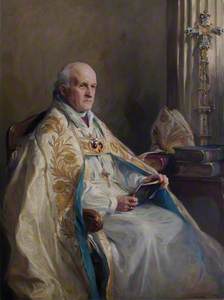The exhibition 'Philip de László: Master of Elegance', at Gainsborough's House, is the first opportunity since 'A Brush with Grandeur' at Christie's in 2004 to see some 50 examples of Philip de László's finest portraiture. It is also the first to focus on the artist's career in England, where he made his home for 30 years until he died in 1937.
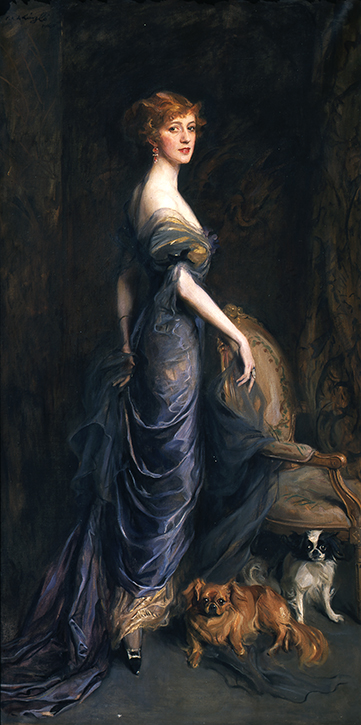
Image credit: Jack Loan / de Laszlo Foundation
Mrs George Owen Sandys, née Dulcie Edythe Angela Redford
1915, painting by Philip Alexius de László (1869–1937)
De László was already one of the most famous painters in Europe when he decided to settle in London in 1907. His relentless energy, charisma and pursuit of perfection in his art saw his circle of patronage widen from Budapest, the city of his birth, via the princely houses of Europe, westward to Vienna where he was living by 1903. London attracted him as a city immersed in a golden age, the capital of a vast Empire spanning the globe. It was the world's financial centre and wealth and luxury abounded, making it an inviting place for a portrait painter.
De László painted more royal sitters than any other painter in history and was first recommended to the British Royal family in 1898 by Queen Victoria's daughter, Empress Frederick of Germany. The artist's great hope to paint the matriarch of Europe's royal houses was not realised but she commissioned him to paint General Sir George White in 1900 and, during this visit, he secured the patronage and friendship of Sir Ernest Cassel, financial advisor to the then Prince of Wales.
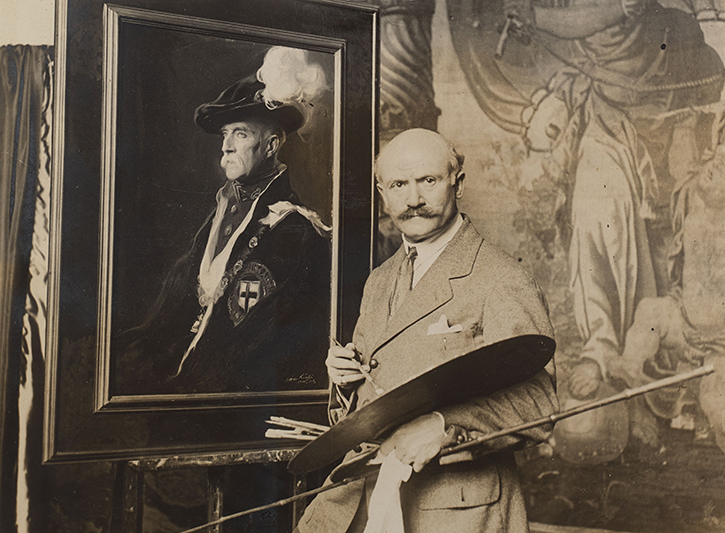
Image credit: de Laszlo Archive / de Laszlo Foundation
Philip de László and his portrait of Henry Charles Keith Petty-Fitzmaurice, 5th Marquess of Lansdown
The groundwork laid, in June 1907 de László announced his arrival in London with a solo exhibition at the Fine Art Society on Bond Street. Edward VII and Queen Alexandra attended and de László was immediately summoned to Buckingham Palace to paint their daughter Princess Victoria and subsequently the King and Queen themselves. This patronage cemented the artist's reputation in Britain, his home for the rest of his life.
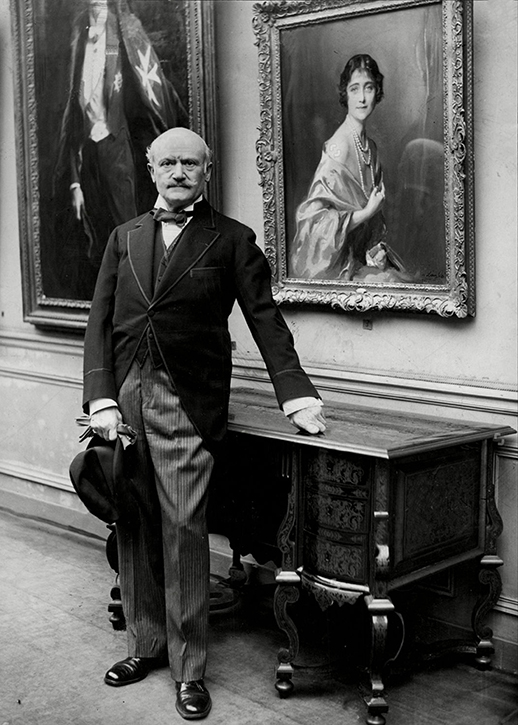
Image credit: de Laszlo Archive / de Laszlo Foundation
Philip de László with his portrait of the Duchess of York at the Charpentier Gallery, Paris, 1931
We were extremely fortunate to secure three loans from HM the King for the exhibition of both his grandmothers, Princess Alice of Greece and Queen Elizabeth when Duchess of York, and his late mother Elizabeth II as a young girl in the dress she wore to Queen Mary's birthday party in 1933. Joining them are the portraits of Queen Marie of Romania and her daughter Princess Elisabeta, Queen of Greece, traced just in time for inclusion in the exhibition.

Image credit: Peles National Museum
Queen Marie of Romania, née Princess Marie of Edinburgh
1924, painting by Philip Alexius de László (1869–1937)
Queen Marie was painted exactly 100 years ago in the artist's London studio at 3 Fitzjohn's Avenue. Owing to the generosity of the Romanian government, the Muzeul Național Peleș and the National Museum of Romanian History, the portrait has returned to the country of its creation to celebrate its centenary, alongside a gold bracelet inlaid with portrait miniatures of Queen Marie and her siblings, presented to the sitter by her father Prince Alfred, Duke of Edinburgh.

Image credit: de Laszlo Archive / de Laszlo Foundation
Queen Marie of Romania in the artist's studio, 1924
De László admired the long history of portrait painting in England, a genre which did not have the same status in his native Hungary. He hoped to find a place there where he could enjoy the warm welcome offered to foreign artists: '...here indeed I could make my life, in this home of the art to which I was devoted, and that I might perhaps aspire to become a link, however humble, in the great chain of foreign artists who had been received and treated by England as her own sons.'
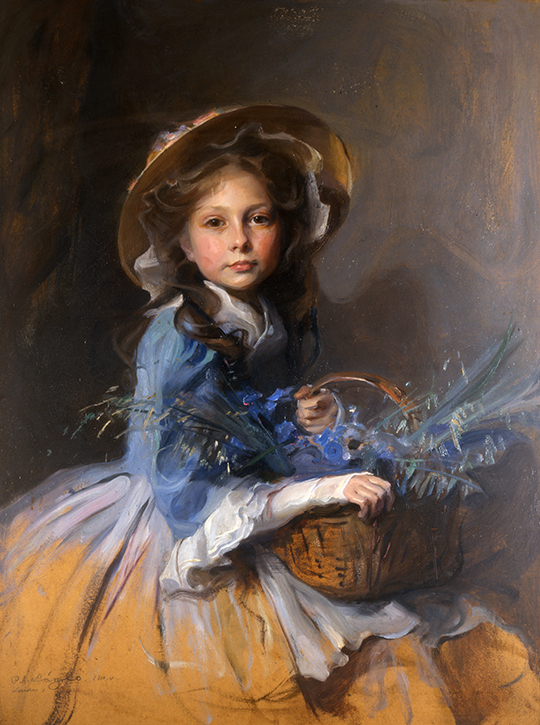
Image credit: Roy Fox Fine Art Photography / de Laszlo Foundation
Anne Mabel Olivia Trouton
1910, painting by Philip Alexius de László (1869–1937)
De László's largest canvases are in the Grand Manner tradition by descent from Van Dyck. Throughout his career, he was included in the elite sphere of portrait painters that included Reynolds, Lawrence and Gainsborough. The latter's later works on display in the new gallery at Gainsborough's House, lavishly hung in emerald green local silk, are fascinating to compare with de László's portraits. Both artists' styles are infused with virtuosity and bravura brushwork.
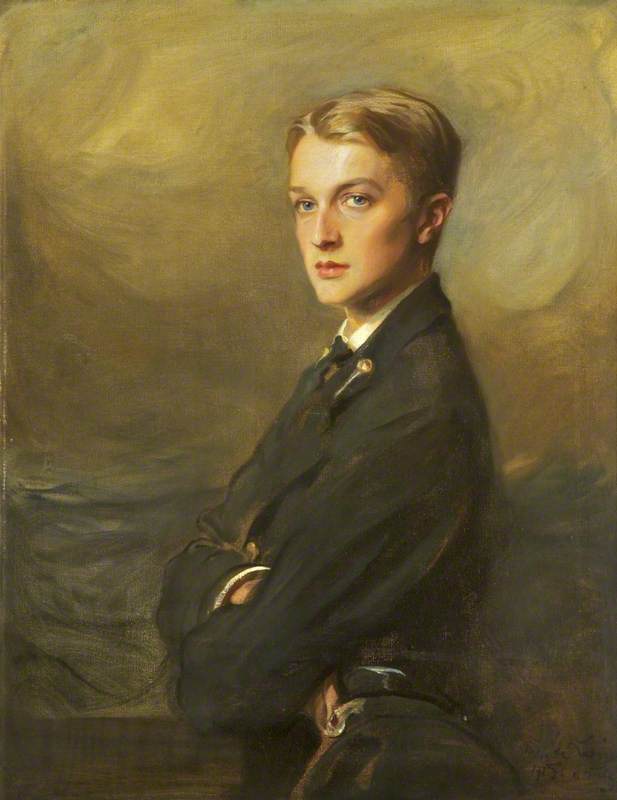
Image credit: Walker Art Gallery
The Honourable Cecil Richard Molyneux (1899–1916) 1915
Philip Alexius de László (1869–1937)
Walker Art GalleryThe period of the First World War (1914–1918) and its effect on the artist's career is less known but plays an important part in this exhibition. De László's story provides a unique perspective on the experience of enemy nationals in Britain during this period as he experienced the war as both a patriotic contributor to the war effort and as a prisoner.
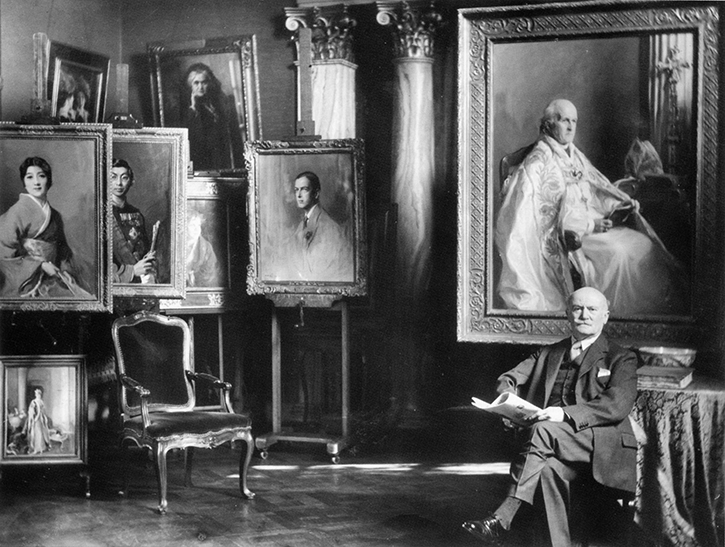
Image credit: de Laszlo Archive / de Laszlo Foundation
Philip de László in his studio at 3 Fitzjohn's Avenue with the portrait of Archbishop Lang, 1937
De László was living in London when war was declared on 4th August 1914 and became extremely busy responding to an intense demand for portraits from serving officers and their families. Between 1914 and 1917, he completed nearly 80 of these at a reduced rate of £50 to £100 compared to his usual fee of £400 for a half-length portrait. His speed was an important factor; his portrait of Captain Maurice Trouton is inscribed 'during one sitting'.

Image credit: Antonia Reeve
Lieutenant James Robert Dundas McEwen
1915, painting by Philip Alexius de László (1869–1937)
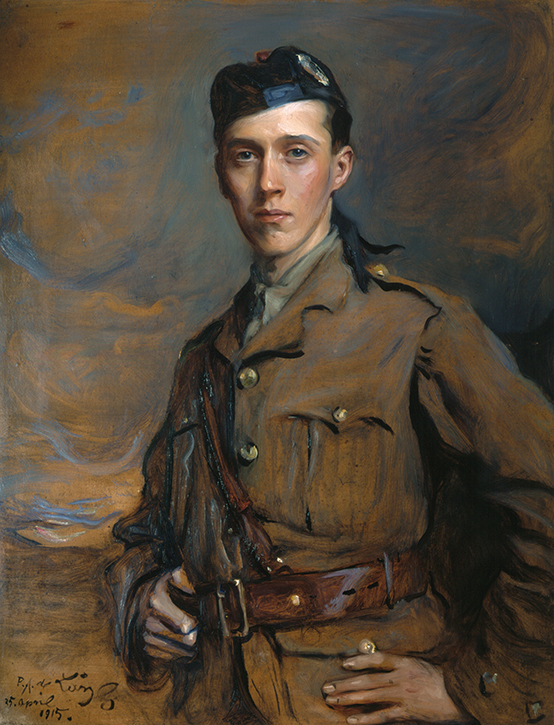
Image credit: Antonia Reeve
Lieutenant John Helias Finnie McEwen
1915, painting by Philip Alexius de László (1869–1937)
His portraits were particularly poignant for the families of those who were killed. Captain Thomas Nelson was painted in service dress in 1916 and killed just six months later. As with all his sitters who did not return, the artist added a cross to mark his death in the 'Sitters' Book'. In July 1917, de László received a letter from Doctor Alexander Barbour: 'Your portrait of my cousin Lieut. T. A. Nelson who fell in France last April is a priceless possession to his widow and Mother now. How many homes you have comforted in these sad days.' In this exhibition, I have included the poignant portraits of the McEwen brothers, one of whom did not return from the Front.

Image credit: Lambeth Palace
Cosmo Gordon Lang (1864–1945), Archbishop of Canterbury 1937
Philip Alexius de László (1869–1937)
Lambeth PalaceDespite de László's considerable contribution to charitable causes and his British naturalisation in August 1914, he was arrested in September 1917 under the Defence of the Realm Act and was imprisoned in Brixton Prison. His case was heard before the Advisory Review Committee headed by Justice Sankey at Westminster Hall. Sir Luke Fildes, The Earl of Selborne, Sir Arthur Lee and William Lockett Agnew gave evidence in support of de László. The case was adjourned and he was returned to Brixton Prison before being moved in November to the Camp for Interned Enemy Aliens at the Cornwallis Road Institution, a former workhouse in Upper Holloway.
Though eventually exonerated, internment deprived de László of his freedom, family, livelihood, art, and friends from September 1917 until June 1919. He was the most famous portrait painter in the world and the temporary loss of his reputation affected him deeply. After his release he worked relentlessly to re-establish himself, driven by the same passionate belief in his art that had brought such heights of success from such humble beginnings.
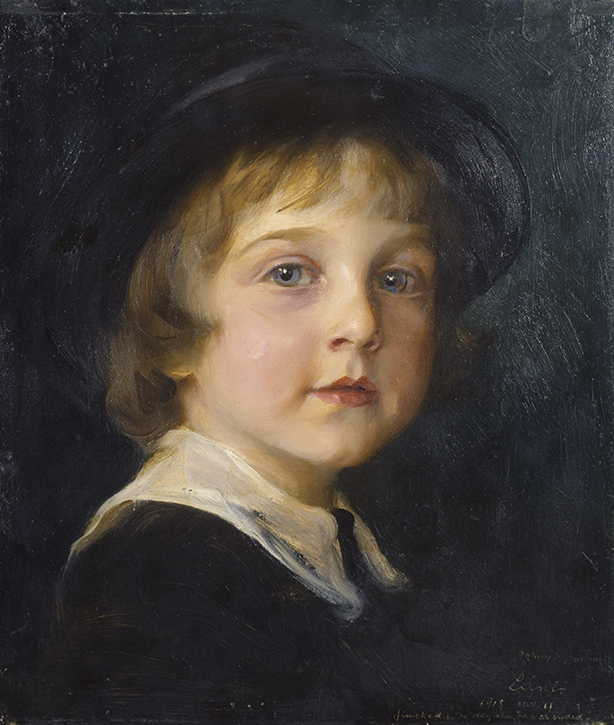
Image credit: Roy Fox Fine Art Photography / de Laszlo Foundation
John Adolphus de Laszlo
painted on Armistice Day, 11th November 1918 by Philip Alexius de László (1869–1937)
Throughout his ordeal, his wife Lucy, née Guinness, and their five sons supported him and were his subjects for the portraits painted at this time. Those included in the exhibition are among his best and most creative compositions. Free from the demands of patrons, he captured his wife and sons at moments and in poses that inspired him while in their domestic surroundings. It is not surprising that these pictures have remained almost exclusively in family collections and this exhibition is a rare opportunity to see many of them hung together.
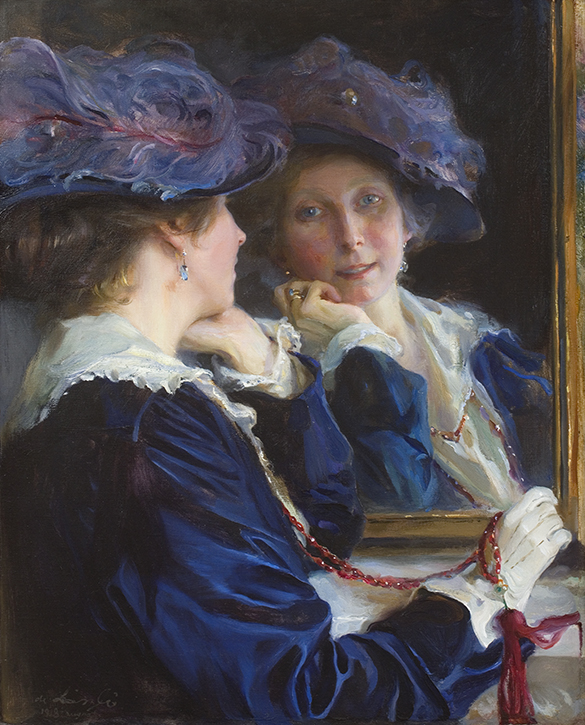
Image credit: Colin Mills / de Laszlo Foundation
Mrs Philip de László, née Lucy Madeleine Guinness
1918, painted by Philip Alexius de László (1869–1937)
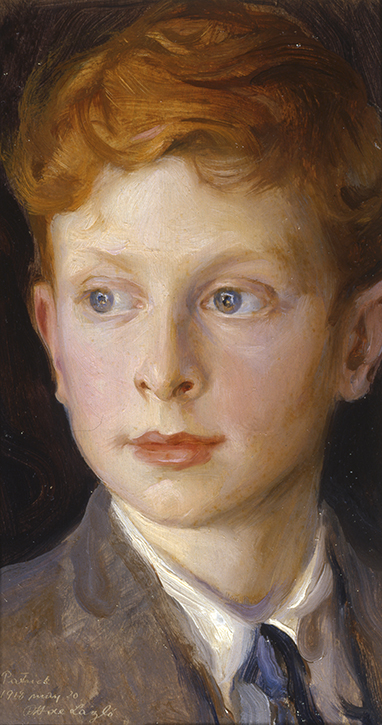
Image credit: Roy Fox Fine Art Photography / de Laszlo Foundation
Patrick David de Laszlo
1918, painted by Philip Alexius de László (1869–1937)
The exhibition and accompanying catalogue have provided an opportunity to feature some of the extensive letter, film and photographic archive that the artist amassed during his lifetime. It is currently being digitised and indexed by the de Laszlo Archive Trust and a portion has been donated to the Heinz Archive and Library at the National Portrait Gallery. Particularly thrilling has been the opportunity to show a film of László painting a portrait of a mannequin from the fashion house Lucile next to the portrait itself. Running to seven minutes, the film is an invaluable insight into the artist's painting technique using the 'sight size' method. It is available to view on our website.
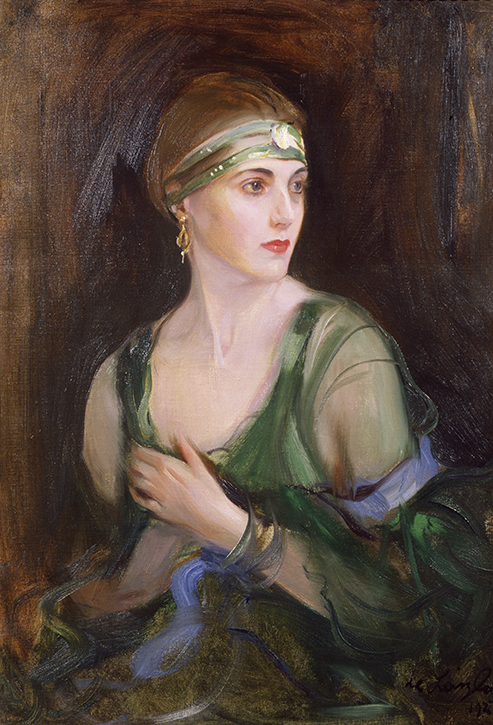
Image credit: de Laszlo Archive © de Laszlo Foundation
A Mannequin from the Fashion House 'Lucile'
1927, painted by Philip Alexius de László (1869–1937)
It is hoped that this exhibition will raise Philip de László's profile and help us trace some of the 400 pictures we are still searching for to complete the catalogue raisonné. Do get in touch at catalogue@delaszlo.com if you know the whereabouts of any works you might spot on the missing paintings page of our website.
Katherine Field, Curator and Senior Editor of The Catalogue Raisonné of Works by Philip de László (1869–1937)
'Philip de László: Master of Elegance' is showing at Gainsborough's House until 23rd June 2024
